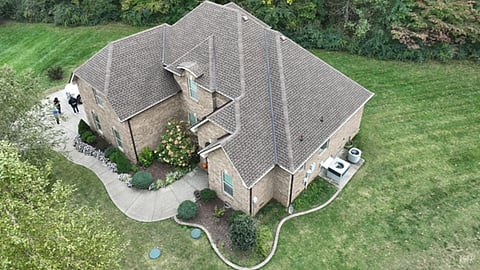Is Your Roof Ready for Storm Season? 5 Warning Signs You Shouldn’t Ignore
The roof shields more than walls and belongings—it protects routines, memories, and every quiet moment inside. Storm season can turn a minor flaw into a sudden disaster, tearing away shingles or soaking hidden wood before you realize it’s begun. A little vigilance now spares you from scrambling in the thick of the storm.
In severe storm prone areas like Tennessee, wind and rain grow more aggressive, stripping roofs in hours instead of years. Small clues—edges curling skyward, light peeking into an attic, grit piling in gutters—carry big warnings. Catching them early keeps repairs manageable and avoids emergencies when weather turns brutal.
Shingles Showing Visible Wear or Missing Pieces
Wind-raked shingles near the ridge often reveal curled edges, lifted tabs, or smooth bare patches where granules have worn away. (The ridge is the peak line where two roof slopes meet.) These weak spots let wind slip under shingles and peel them off in a gust. Check hips, valleys, and around vents for clusters of damage—multiple failures along a run usually mean the roof covering is past its weatherproof life.
Single split tabs can be patched, but widespread curling or missing pieces suggests broader aging. A roofing company in Brentwood TN can inspect adhesive bonds, check the underlayment, and spot hidden rot before it spreads. Call for a professional assessment when three or more shingles are compromised, aiming for service ahead of storm season.
Persistent Leaks or Water Stains Indoors
Dark-edged stains creeping across ceilings or walls often mean water is slipping past your roof’s defenses. Once moisture reaches insulation or drywall, repairs become more complex and expensive, even before visible mold appears. These marks are early red flags, not minor blemishes.
After each rainfall, photograph and date any stain to monitor growth. If the spot expands or reappears after drying, it signals ongoing leakage. This record can speed insurance claims and give contractors a clear timeline. Acting early protects structural materials from hidden rot and prevents escalating damage during the next major storm.
Sagging Roofline or Uneven Surface
From the street, a sagging roofline draws the eye—a shallow dip at the ridge, a wave above the garage, or a crooked eave line. Beneath that curve may be rotting decking, saturated beams, or fractured supports. Left to spread, it forces invasive, costly repairs that cut deep into both time and budget.
Inside the attic, clues multiply. Compressed insulation, rafter shifts, or a sliver of daylight slipping through a seam all betray structural strain. Even subtle dips can buckle further under heavy rains or driving winds. A quick check with a level can reveal trouble early, before storms push the damage past the point of simple repair.
Excessive Shingle Granules in Gutters
Gritty particles in your gutters after a storm aren’t just debris—they’re the protective granules from your shingles washing away. Without them, asphalt breaks down faster, leaving your roof vulnerable to leaks and wind damage. This loss accelerates as the roof ages, shortening its effective lifespan.
Check gutters after major rains and keep a small sample from each cleaning. A steady increase signals your shingles are breaking down. When deposits grow noticeably, replacement is no longer far off—it’s approaching fast. Acting now can prevent leaks from emerging at the height of storm season.
Daylight Visible Through Attic Boards
Thin shafts of daylight in the attic mark gaps where sheathing or flashing has failed. Pinholes let driven rain and wind under roofing, widening damage to decking and insulation. Check around chimneys, plumbing stacks and vent collars—these seals fail first. Use a flashlight and peer along rafter bays for linear streaks or bright spots.
Those openings invite moisture, debris, and even pests, accelerating rot and staining insulation before storms arrive. Temporary sealing around flashing and vent boots cuts short-term risk while replacement is arranged. A simple temporary fix is tucking foam backer rod and peel-and-stick flashing into gaps around chimneys and vents until permanent repairs can be scheduled.
A well-kept roof stands firm against the fiercest storms, holding back rain, wind, and the stress they bring. Early detection of curling shingles, spreading stains, a sagging ridge, or stray daylight in the attic allows repairs before trouble deepens. Acting now turns weakness into strength, extending your roof’s life and your home’s protection. With problems addressed ahead of time, you face storm season with confidence, knowing your roof is ready to endure whatever the weather delivers, keeping the elements outside and preserving the comfort, safety, and value within your walls.
Inspired by what you read?
Get more stories like this—plus exclusive guides and resident recommendations—delivered to your inbox. Subscribe to our exclusive newsletter
Resident may include affiliate links or sponsored content in our features. These partnerships support our publication and allow us to continue sharing stories and recommendations with our readers.

